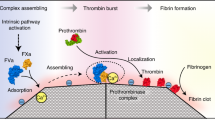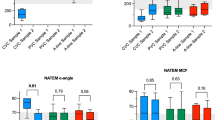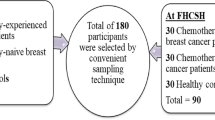Abstract
Aim:
To examine the changes in electrolyte concentrations after addition of zeolite-based hemostat QuikClot in blood and the effects of zeolite on blood coagulation in vitro.
Methods:
Fresh blood was taken from healthy adult volunteers and sheep, and the electrolyte concentrations in blood were measured using a blood electrolyte analyzer. Zeolite Saline Solution (ZSS) was prepared by addition of 2 g zeolite to 0.9% NaCl solution (4, 8, or 16 mL). The electrolytes in ZSS were measured using inductively coupled plasma atomic emission spectroscopy. The prothrombin time (PT) and activated partial thromboplastin time (APTT) of blood were measured using the test tube method. The activated clotting time (ACT) and clotting rate (CR) of blood were measured with Sonoclot Coagulation and Platelet Function Analyzer.
Results:
Addition of zeolite (50 and 100 mg) in 2 mL human blood significantly increased Ca2+ concentration, while Na+ and K+ concentrations were significantly decreased. Addition of zeolite (50 and 100 mg) in 0.9% NaCl solution (2 mL) caused similar changes in Ca2+ and Na+ concentrations. Si4+ (0.2434 g/L) and Al3+ (0.2575 g/L) were detected in ZSS (2 g/8 mL). Addition of ZSS in sheep blood shortened APTT in a concentration dependent manner, without changing PT. ZSS or aqueous solution of CaCl2 that contained Ca2+ concentration identical to that of ZSS significantly shortened ACT in human blood without significantly changing CR, and the effect of ZSS on ACT was not significantly different from that of CaCl2.
Conclusion:
Zeolite releases Ca2+ into blood, thus accelerating the intrinsic pathway of blood coagulation and shortening the clot formation time.
Similar content being viewed by others
Log in or create a free account to read this content
Gain free access to this article, as well as selected content from this journal and more on nature.com
or
References
Alam HB, Chen Z, Jaskille A, Querol RI, Koustova E, Inocencio R, et al. Application of a zeolite hemostatic agent achieves 100% survival in a lethal model of complex groin injury in swine. J Trauma 2004; 56: 974–83.
Pusateri AE, Delgado AV, Dick EJ Jr, Martinez RS, Holcomb JB, Ryan KL . Application of a granular mineral-based hemostatic agent (QuikClot) to reduce blood loss after grade V liver injury in swine. J Trauma 2004; 57: 555–62.
Inaba K, Rhee P, Teixeira PG, Barmparas G, Putty B, Branco BC, et al. Intracorporeal use of advanced local hemostatics in a damage control swine model of grade iv liver injury. J Trauma 2011; 71: 1312–8.
Rhee P, Brown C, Martin M, Salim A, Plurad D, Green D, et al. QuikClot use in trauma for hemorrhage control: case series of 103 documented uses. J Trauma 2008; 64: 1093–9.
Alam HB, Burris D, DaCorta JA, Rhee P . Hemorrhage control in the battlefield: role of new hemostatic agents. Mil Med 2005; 170: 63–9.
Wright JK, Kalns J, Wolf EA, Traweek F, Schwarz S, Loeffler CK, et al. Thermal injury resulting from application of a granular mineral hemostatic agent. J Trauma 2004; 57: 224–30.
Wright FL, Hua HT, Velmahos G, Thoman D . Intracopreal use of the hemostatic agent QuickClot in a coagulopathic patient with combined thoracoabdominal penetrating trauma. J Trauma 2004; 56: 205–8.
Ostomel TA, Stoimenov PK, Holden PA, Alam HB, Stucky GD . Host-guest composites for induced hemostasis and therapeutic healing in traumatic injuries. J Thromb Thrombolysis 2006; 22: 55–67.
Mortazavi SM, Atefi A, Roshan-Shomal P, Raadpey N, Mortazavi G . Development of a novel mineral based haemostatic agent consisting of a combination of bentonite and zeolite minerals. J Ayub Med Coll Abbottabad 2009; 21: 3–7.
Hoffman R, Benz EJ jr, Shattil SJ . Hematology: Basic principles and practice, 4th ed. Philadelphia, PA: Elsevier, Churchill Livingstone; 2005.
Acknowledgements
We would like to acknowledge the invaluable guidance and support provided by Qi-bing MEI, PhD (Department of Pharmacology, Fourth Military Medical University) and Dr Shu-jun HAN, MD (Department of Anesthesiology, General Hospital of Armed Police Forces). We also gratefully acknowledge the superb technical assistance provided by Ping HUANG (Department of Laboratory Medicine, School of Stomatology, Fourth Military Medical University).
Author information
Authors and Affiliations
Corresponding authors
Rights and permissions
About this article
Cite this article
Li, J., Cao, W., Lv, Xx. et al. Zeolite-based hemostat QuikClot releases calcium into blood and promotes blood coagulation in vitro. Acta Pharmacol Sin 34, 367–372 (2013). https://doi.org/10.1038/aps.2012.159
Received:
Accepted:
Published:
Issue date:
DOI: https://doi.org/10.1038/aps.2012.159
Keywords
This article is cited by
-
Application and progress of inorganic composites in haemostasis: a review
Journal of Materials Science (2024)
-
An improved blood hemorrhaging treatment using diatoms frustules, by alternating Ca and light levels in cultures
Marine Life Science & Technology (2023)
-
Topical biomaterials to prevent post-tonsillectomy hemorrhage
Journal of Otolaryngology - Head & Neck Surgery (2019)
-
Application of zeolitic rocks in the environment: assessment of radiation due to natural radioactivity
Journal of Radioanalytical and Nuclear Chemistry (2019)
-
The effect of hemostatic dressing prototypes for the uniformed services on selected blood coagulation parameters in pigs
Acta Veterinaria Scandinavica (2017)



